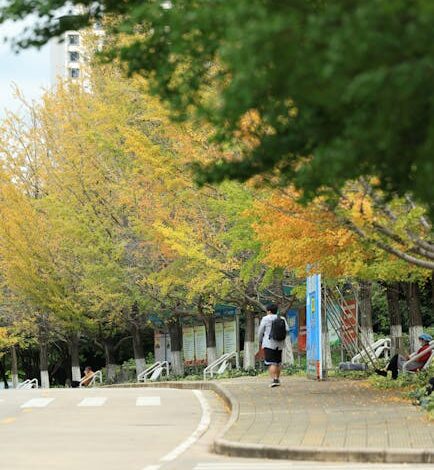This Is Why You Should Try Ultralight Backpacking (2025)

This Is Why You Should Try Ultralight Backpacking (2025)
Estimated Reading Time
6 minutes
- Ultralight backpacking reduces base weight (under 10 lbs) for enhanced freedom and deeper nature connection.
- Lighter loads lead to reduced physical strain, increased hiking distance, and greater mental engagement with surroundings.
- The philosophy involves strategic gear choices, multi-use items, and a minimalist mindset, not just expensive equipment.
- Weight reduction focuses on “The Big Three” (pack, shelter, sleep system) and smart management of consumables.
- Adopting ultralight principles transforms outdoor experiences, making adventures more enjoyable, accessible, and less burdensome.
- The Unrivaled Freedom of a Lighter Load
- How to Embrace the Ultralight Philosophy: More Than Just Gear
- Real-World Freedom: A Weekend on the Appalachian Trail
- Embrace the Ultralight Journey for 2025 and Beyond
- Your Next Step: Start Your Ultralight Transformation Today!
Imagine scaling a mountain pass, your steps light, your body unburdened, the panoramic views unfolding before you with a clarity unobstructed by physical strain. For many traditional backpackers, the sheer weight of their gear often turns a potential wilderness idyll into a grueling endurance test. But what if we told you there’s a different way? A path to deeper connection with nature, greater freedom, and enhanced comfort on the trail? Welcome to the world of , a movement poised to redefine outdoor adventure in 2025 and beyond.
Ultralight backpacking isn’t just a trend; it’s a philosophy. It’s about meticulously reducing the weight of your gear, specifically your “base weight” – everything you carry except for consumables like food, water, and fuel. While definitions vary, generally, an ultralight setup boasts a base weight under 10 pounds (4.5 kg). This isn’t about sacrificing safety or comfort; it’s about intelligent gear choices, multi-use items, and a minimalist mindset. As we look towards 2025, advancements in material science and innovative design are making this approach more accessible and effective than ever before. If you’ve ever felt the drag of a heavy pack, read on – your outdoor experience is about to be revolutionized.
The Unrivaled Freedom of a Lighter Load
The most immediate and profound impact of adopting an ultralight approach is the sheer physical relief. Hauling 40-50 pounds of gear for miles through varied terrain takes a toll on your joints, muscles, and overall energy levels. A heavy pack can lead to quicker fatigue, increased risk of injury, and a constant awareness of the burden on your back. With an ultralight setup, however, this changes dramatically. Your body works less, allowing you to hike further, faster, and with significantly less strain. The joy of movement becomes palpable, transforming what might have been a chore into a graceful dance with the landscape.
Beyond the physical, the mental benefits are equally compelling. When your pack isn’t a constant source of discomfort, your mind is free to engage more fully with your surroundings. You’ll notice the subtle shifts in light, the intricate patterns of wildflowers, the whisper of the wind through the pines. The stress of carrying a cumbersome load diminishes, replaced by a sense of liberation and connection. This enhanced mental state not only makes the journey more enjoyable but also allows for a deeper, more mindful immersion in nature. Imagine reaching a pristine alpine lake, not utterly exhausted, but energized and ready to explore – that’s the ultralight advantage.
Furthermore, shedding weight opens up new possibilities for your adventures. Covering more ground becomes easier, enabling you to access more remote, less-traveled areas. This increased range means you can explore diverse ecosystems, witness breathtaking vistas rarely seen by the average hiker, and craft more ambitious itineraries. Whether you’re planning a thru-hike of a long-distance trail or a weekend escape into your local wilderness, a lighter pack means greater flexibility and a reduced impact on your body. Indeed, the possibilities are vast. As WIRED aptly put it,
“You can camp in the backcountry with under 10 pounds of gear and be warm, comfortable, and fed. Here’s WIRED’s guide to shedding weight.”
This isn’t a theoretical ideal; it’s a practical, achievable reality for today’s backpacker.
How to Embrace the Ultralight Philosophy: More Than Just Gear
Many aspiring ultralight backpackers mistakenly believe the primary solution lies in buying the most expensive, lightest gear. While quality lightweight equipment certainly helps, the true essence of ultralight is a mindset – a strategic approach to every item you bring. It’s about optimizing, questioning, and ruthlessly eliminating the unnecessary.
The journey to ultralight usually begins with an honest assessment of your current setup. Many backpackers carry items “just in case” or out of habit, leading to significant accumulated weight. The goal is to move from a mindset of “what if I need this?” to “do I truly need this for this specific trip?”
Actionable Step 1: Conduct a Comprehensive Gear Audit
Before buying anything new, lay out all your existing backpacking gear. Weigh every single item, no matter how small, and record it on a spreadsheet. Categorize items into “The Big Three” (backpack, shelter, sleep system), clothing, kitchen, first aid, navigation, and miscellaneous. This granular approach will illuminate exactly where your weight is coming from. You’ll likely be surprised by the combined weight of seemingly innocuous items like an oversized multi-tool or an extra pair of camp shoes, all contributing to unnecessary bulk.
Actionable Step 2: Prioritize “The Big Three” for Weight Reduction
Your backpack, shelter (tent, tarp, or hammock system), and sleep system (sleeping bag/quilt and pad) typically account for the largest portion of your base weight. These are the areas where you’ll get the most “bang for your buck” in terms of weight savings. Research lighter alternatives for these items, focusing on materials like Dyneema Composite Fabric (DCF) for shelters, high-fill-power down insulation for sleeping bags or quilts, and frameless or minimalist packs. Remember, a lighter pack often necessitates a lighter overall load, as the pack itself isn’t designed to comfortably carry excessive weight.
Actionable Step 3: Master Your Consumables & Multi-Use Items
While not part of your base weight, food, water, and fuel constitute a significant portion of your “skin-out” weight (everything you carry). Plan your meals meticulously for the exact duration of your trip, opting for calorie-dense, dehydrated foods. Carry only the amount of water you need until your next reliable source, utilizing a water filter or purification tablets on the go. Furthermore, look for items that serve multiple purposes: trekking poles can support your shelter, a bandana can be a pot holder, towel, or pre-filter, and your cooking pot can double as an eating bowl. Every ounce saved here contributes to a lighter, more enjoyable trek.
Real-World Freedom: A Weekend on the Appalachian Trail
Consider Sarah’s experience. For years, her weekend trips on sections of the Appalachian Trail were characterized by nagging shoulder pain and a slow, deliberate pace. Her traditional pack, filled with a heavy tent, an oversized sleeping bag, and a collection of “just in case” items, often tipped the scales at over 30 pounds for a two-night trip. She loved the trail but dreaded the physical toll.
After researching ultralight principles and meticulously auditing her gear, Sarah made some key changes. She invested in a lightweight tarp-tent, swapped her synthetic sleeping bag for a down quilt, and replaced her bulky camp stove with an alcohol stove and a smaller pot. She also ditched her heavy leather hiking boots for trail runners and pared down her clothing layers. Her base weight dropped from 22 pounds to a lean 9 pounds.
Her next weekend trip was transformative. The climb up the first ridge felt less like a struggle and more like an invigorating ascent. She found herself moving with a newfound agility, her knees and shoulders free from the constant strain. She reached her campsite earlier, with more energy to set up, explore, and simply relax by the fire. The absence of a heavy load allowed her to appreciate the dense forest canopy, the sound of a distant stream, and the quiet camaraderie of fellow hikers without the persistent distraction of physical discomfort. This wasn’t about deprivation; it was about experiencing the trail more fully, proving that less truly is more.
Embrace the Ultralight Journey for 2025 and Beyond
Ultralight backpacking is more than just a method of carrying less; it’s an invitation to experience the wilderness with a profound sense of freedom and presence. It challenges conventional notions of what’s necessary, encouraging a thoughtful and intentional approach to every aspect of your outdoor journey. As gear technology continues to advance and our understanding of minimalist comfort grows, 2025 offers an exciting landscape for both seasoned adventurers and newcomers to embrace this transformative style of exploration.
Whether your goal is to conquer long-distance trails, enjoy more comfortable weekend excursions, or simply deepen your connection with nature, shedding unnecessary weight will fundamentally enhance your experience. It empowers you to move with greater ease, reduce your environmental footprint, and fully immerse yourself in the beauty of the backcountry.
So, are you ready to lighten your load and revolutionize your adventures? The trail awaits, unburdened and boundless.
Your Next Step: Start Your Ultralight Transformation Today!
Don’t just dream of lighter adventures – make them a reality. Begin by auditing your current gear using our downloadable checklist, then explore our comprehensive guide to lightweight gear recommendations for your first “Big Three” upgrades. Join our vibrant community of ultralight enthusiasts to share tips, tricks, and trail stories, and embark on a journey that promises unparalleled freedom on every hike. Your lighter pack, and a more fulfilling wilderness experience, are just a few thoughtful choices away!
Frequently Asked Questions
- Q: What is ultralight backpacking?
A: Ultralight backpacking is a philosophy and method of meticulously reducing the weight of your gear, especially your “base weight” (everything you carry except consumables), typically aiming for under 10 pounds (4.5 kg). It focuses on intelligent gear choices, multi-use items, and a minimalist mindset to enhance the outdoor experience.
- Q: What are the main benefits of ultralight backpacking?
A: Key benefits include reduced physical strain, allowing you to hike further and faster; enhanced mental engagement with nature due to less discomfort; greater flexibility in trip planning; and the ability to access more remote areas. It transforms strenuous treks into more enjoyable and immersive experiences.
- Q: How can I start ultralight backpacking?
A: Begin with a comprehensive gear audit, weighing every item in your current setup. Prioritize weight reduction in “The Big Three” (backpack, shelter, sleep system) by researching lighter alternatives. Master your consumables by planning calorie-dense meals and carrying only necessary water, and look for multi-use items.
- Q: What are “The Big Three” in ultralight backpacking?
A: “The Big Three” refers to your backpack, shelter (tent, tarp, or hammock system), and sleep system (sleeping bag/quilt and pad). These three items typically constitute the largest portion of your base weight and are the most impactful areas for weight savings.
- Q: Is ultralight backpacking only for experienced hikers?
A: No, ultralight backpacking is for both seasoned adventurers and newcomers. While it involves a learning curve in gear selection and minimalist packing, the principles can be applied by anyone looking to improve their outdoor experience, making trips more comfortable and enjoyable regardless of experience level.





